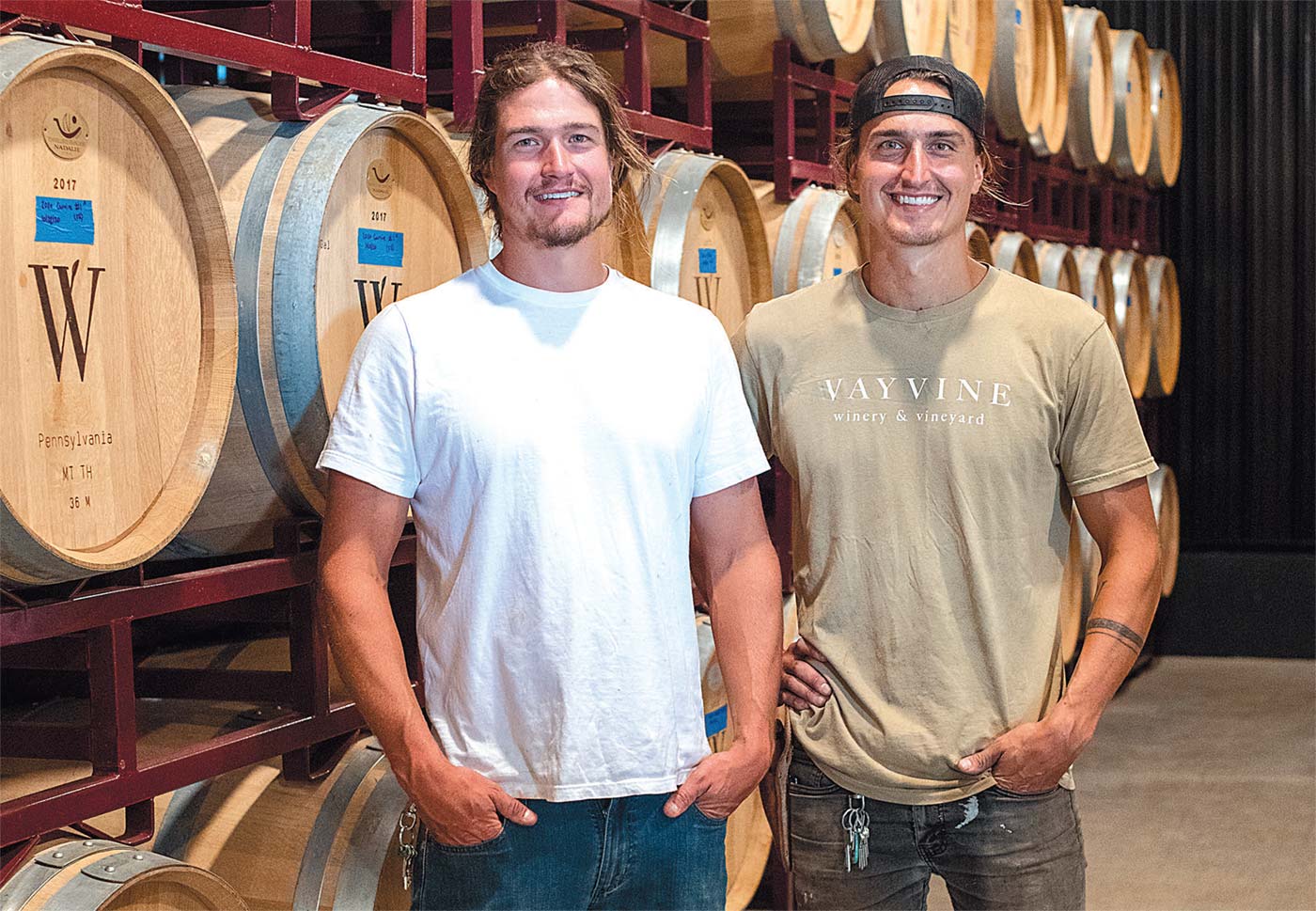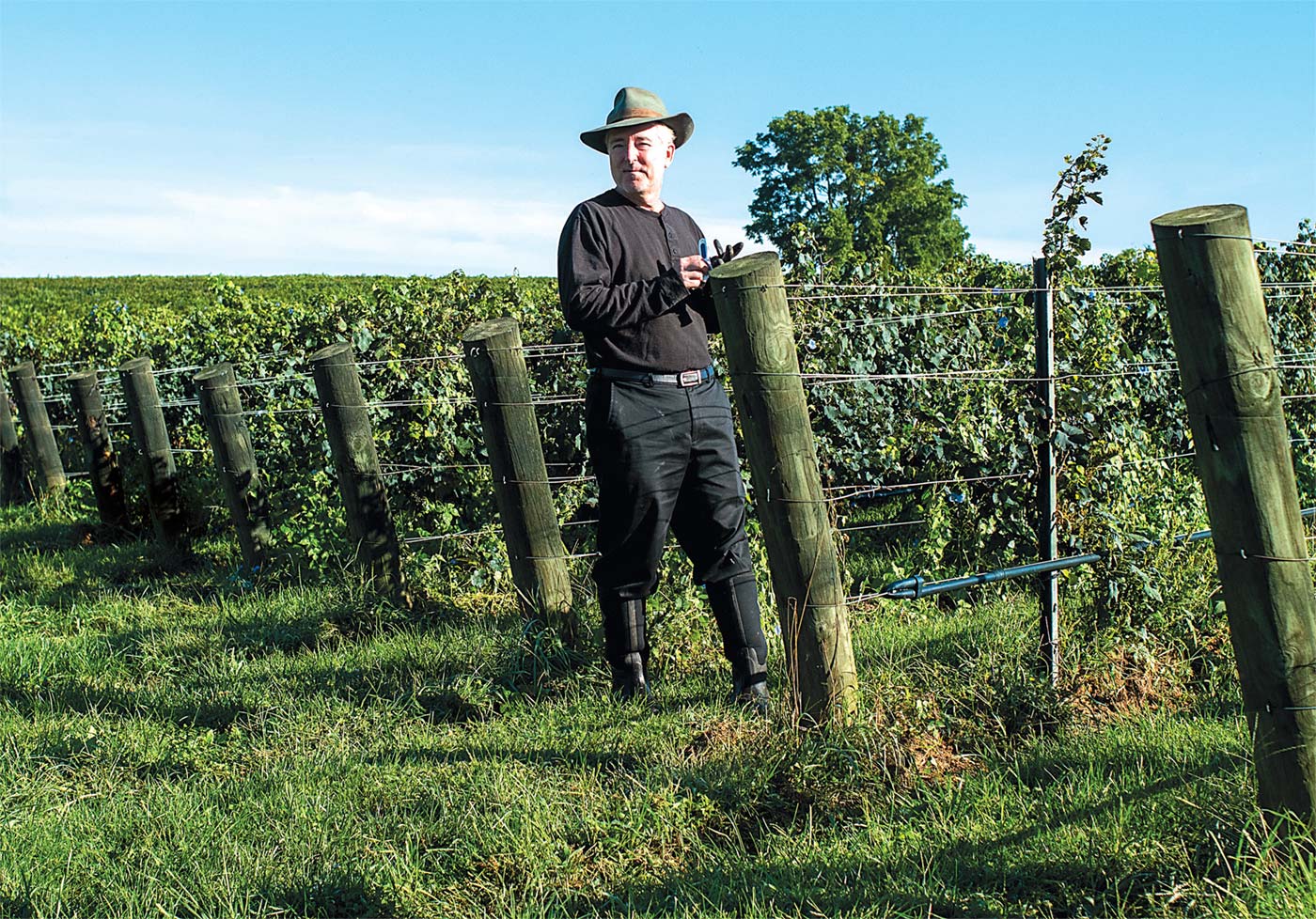Pennsylvania Wine Makers Return to Older Techniques
EARLY EFFORTS TO PRODUCE SPARKLING WINE often ended with exploding bottles. Winemakers through the centuries eventually found ways to make bubbly without exploding glass. In Champagne, a purposeful second fermentation in the bottle with a second dose of yeast does the trick. In Italy, Prosecco producers add carbon dioxide to wine in a tank, then bottle the already effervescent wine. And, of course, the bottles themselves have gone through structural redesigns, too.
In recent years, an increasing number of contemporary winemakers are reaching back into history to produce sparkling wines using an archaic method. Known as the ancestral method, or pétnat (short for pétillent naturel), it’s the oldest known way to make sparkling wine, and wine drinkers are embracing its unique results, born from minimal intervention.
For the majority of wine’s history, whatever yeast clung to the grapes or floated around winemaking facilities fermented the juice. Now, most wineries use commercial yeast because that is an easier way to start fermentation. But at Vox Vineti winery in Christiana, Pennsylvania, owner Ed Lazzerini has returned to the old way. He lets native yeasts ferment the grapes that grow in his vineyard. Allowing the yeast from the terroir to influence the wine is fitting for a winery with a name that means “voice of the vineyards.”
“We start a pied de cuve typically from Petit Verdot,” says Lazzerini, talking about his red wine fermenting method. Think of a pied de cuve as a starter, much like the sourdough starter that allows the yeast in the kitchen air to ferment the flour and water for bread. With a pied de cuve, the ambient yeast creates a grape-fermenting starter.
“We’ll start a fermentation in an old barrel that we’ll pop the head off,” he says. “Those barrels really trap heat well, and you can get a stable fermentation going. We’ll start the fermentation that way, and as soon as we get a good, strong fermentation going, I’ll pitch a liter of must [freshly crushed grapes] in and within 24 hours, it’s bubbling.”
That’s not difficult for someone who knows what he’s doing, but a 24-hour process that needs to be watched is a commitment, compared to the process of adding measured commercial yeast.
“The only times I’ve ever had problems have been with rosé. Only once did I have a stuck fermentation. I had to inoculate. It had been two weeks, and it wasn’t getting going,” Lazzarini says.
He decided not to lose a vintage of the winery’s barrel-fermented Discuss Rosé, a wine that, depending on the vintage, can be a blend of estate-grown cabernet sauvignon, cabernet franc, nebbiolo, and barbera.

Wayvine brothers, Zachary (left) and James Wilson
Other older methods Lazzerini uses include not filtering the wines and doing most vineyard work by hand. He also al lows each year’s wines to have their own distinct qualities, instead of taking measures to ensure consistency in taste year after year.
About 15 miles east of Vox Vineti, Va La Vineyards in Avondale, Pennsylvania makes wines with indigenous yeast, too. Owner and winemaker Anthony Vietri grew up on the land he now farms. His Italian family made wine for their own consumption using old fashioned measures.
But in 1999, he backed off those older winemaking ways.
“When we started commercially, I made a personal vow to understand the science behind the things I already knew how to do but didn’t know why it worked,” he says.
He started with modern techniques and added some of the older methods back in as he discovered they were commercially safe.
Va La is known for its field blends, wines produced from co-fermented grape varieties that grow together in a vineyard. Most wines hundreds of years ago were made from co-fermented grapes. At first, Vietri fermented varieties separately, eventually learning which grapes were major players and which were supporting players. With that knowledge, he switched to co-fermenting for all his blends.
Va La’s co-fermented Prima Donna skin contact white wine (most conventional white wine is fermented without skins) is what many today call “orange wine.” For Vietri, skin contact fermentation is the way white wines were made when he was growing up. It was also the way white wines were made hundreds and thousands of years ago.
Prima Donna is a co-fermented blend of tocai, malvasia bianca, fiano, pinot grigio and petit manseng grapes. The result of its skin contact is a rich, white, ageable wine with a beautiful, deep amber hue.
Throughout Eastern Pennsylvania, other wineries are adopting winemaking methods of yore.

Wayvine Winery in Nottingham produces four different pét-nats—a riesling, a gruner veltliner, a pinot grigio and a carmine rosé—using the same fermented juice that goes into their still wines.
“We filled up bottles from our tanks,” says James Wilson, grape wrangler and assistant winemaker. “Then, we laid those bottles down and let them finish fermentation.” The pét-nats are fresh, bubbly and unfiltered. People love them. Wilson expects to double the amount of pét-nat they make this year.
Wayvine is also producing a still piquette, a fermented wine byproduct made from reconstituted grape pomace (the solids that remain after juice is pressed). Centuries ago, piquette quenched the thirst of field workers, but this naturally low-ABV beverage—it can be still or sparkling— now connects with younger drinkers who want something new, different and lower in alcohol.
Fermenting and aging wine in clay amphora is as old as wine itself. Winemaker Chuck Zaleski at Fero Vineyards in Lewisburg is adding amphora to his winemaking program. Some of his 2021 vintage of separavi, a native grape from the country of Georgia, will age for two years in amphora.
“I’m doing it for the tradition. I always try to do our winemaking in a somewhat uncomplicated, traditional way,” he says.
And, at Camuna Cellars, probably the newest winery in the region, located in a warehouse in Northeast Philadelphia, winemaker Eli Silins is making kosher, low-intervention piquette from locally sourced chambourcin and gruner veltliner, as well as a skin-contact seyval blanc.
The former California winemaker is happy to be here on the East Coast. “People out here are doing really interesting things,” he says.
Yes, yes they are. And a lot of those things just happen to have been interesting hundreds or thousands of years ago, too.
WHERE TO FIND PÉT-NAT (PÉTILLENT NATUREL) WINES
Here are some locations where you can purchase many of the wines mentioned in this article, as well as similar bottles from around the globe:
Martha
Kensington’s Martha bar frequently carries wines from Va La, Vox Vineti, Wayvine and other Eastern Pennsylvania wineries.
215.867.8881
2113 E. York St.
marthakensington.com
Jet Wine Bar
Located on South Street, slightly off the Rittenhouse Square district, you’ll find a global selection of wines like these at Jet. Although it’s on a rotating basis, the wine bar carries wines from local wineries, too.
215.735.1116
1525 South St.
jetwinebar.com
Bloomsday Café
In Society Hill’s Headhouse Square, Bloomsday Café’s bottle shop has wines from several East Coast producers and other regions that fit the older winemaking method description.
267.319.8018
414 South 2nd St.
bloomsdaycafe.com
Tinys Bottle Shop
Behind The Luna Inn in Port Richmond is the bar’s bottle shop, Tinys Bottle Shop. It is tiny, but it has a large selection of low-intervention wines, including pétnats, piquettes, skin contact wines and many others.
267.639.6842
3124 Richmond St.
lunarinn.com/tinys-bottle-shop





